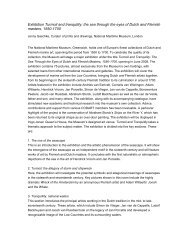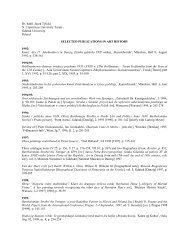courant 7 - CODART
courant 7 - CODART
courant 7 - CODART
Create successful ePaper yourself
Turn your PDF publications into a flip-book with our unique Google optimized e-Paper software.
codart Courant 7/December 2003 16<br />
which was guarded by armed patrolmen of the<br />
Boston police force, the collectors offered the<br />
study trip participants and other guests a<br />
lively dinner on the ground floor of the club.<br />
Upon sitting down at the table, all participants<br />
were given copies of the following<br />
publications:<br />
– Naomi and Roger Gordon, A selection of<br />
Dutch 18th-century drawings and watercolors<br />
from the Gordon collection: a souvenir catalogue<br />
for the codartstudy visit, October 29, 2003,<br />
Boston 2003.<br />
– Sheldon and Leena Peck, Rembrandt<br />
drawings: twenty-five years in the Peck<br />
Collection. A private exhibition at the St.<br />
Botolph Club, Boston, October 29, Boston 2003.<br />
– Franklin W. Robinson and Sheldon Peck,<br />
exhibition catalogue Fresh woods and<br />
pastures new: seventeenth-century Dutch<br />
landscape drawings from the Peck collection,<br />
Chapel Hill (Ackland Art Museum), Ithaca<br />
(Herbert F. Johnson Museum of Art) and<br />
Worcester (Worcester Art Museum) 1999.<br />
In his word of welcome, Roger Gordon recalled<br />
the first exhibition of 18th-century Dutch art<br />
in the United States in 1971, organized by<br />
Roger Mandle at the Minneapolis Institute of<br />
Arts, of which he was then director. Mandle<br />
was a special guest that evening, as was<br />
Seymour Slive, the 50th anniversary of whose<br />
ground-breaking book Rembrandt and his critics,<br />
1630-1730 was called to mind by Sheldon Peck.<br />
Both hosts stressed the fact that they had<br />
always collected together with their wives,<br />
whose knowledge and taste complemented<br />
their own. Sheldon Peck reported that Leena<br />
sometimes vetoed purchases of historically<br />
interesting drawings because they were ugly.<br />
The collectors stressed that they also consulted<br />
art historians like Mandle and Slive, but also<br />
the Boston curators. Our study trip participant<br />
Maritta Pitkänen, it emerged, was an advisor<br />
to the Pecks; she had once been Leena’s patient,<br />
when she was still a dentist working in<br />
Finland.<br />
Sheldon Peck referred to the competition<br />
between collectors in Boston and other parts of<br />
the United States and abroad. Once, sitting<br />
behind Roger Gordon at a print auction and<br />
seeing him not bid on a drawing that would<br />
have fit in his collection, he bought it just so<br />
that it would come to the Boston area.<br />
By way of thanking the Boston curators and<br />
collectors who were present at the dinner, Gary<br />
Schwartz gave each of them a portrait etching<br />
from Arnold Houbraken’s Groote schouburgh der<br />
Nederlantsche konstschilders en schilderessen (1718-<br />
1721). codarthad located a complete set at<br />
the print dealer E.H. Ariëns Kappers in the<br />
Nieuwe Spiegelstraat in Amsterdam, around<br />
the corner from the codartoffices on the<br />
Keizersgracht. They were wrapped in gift<br />
paper and given at random to the recipients. In<br />
addition to the hosts and the local committee,<br />
prints were presented to Mandle and Slive in<br />
recognition of their contribution to the<br />
collecting of Dutch and Flemish art in the<br />
United States. At half past ten, when most<br />
codartmembers had already left for the<br />
hotel, Peck had still not tired of showing and<br />
explaining his collection, this time to the<br />
security staff and bar personnel.<br />
Visits to private collections<br />
In the four and a half days to come, we were<br />
able to see five more private collections. Many<br />
of the paintings in these collections had<br />
already been on display to the public in the<br />
summer of 2002, when the Museum of Fine<br />
Arts in Boston held the exhibition The poetry of<br />
everyday life: Dutch painting in Boston, curated by<br />
Ronni Baer.<br />
Certain general resemblances between the<br />
collectors and collections struck the group.<br />
– Living in or near Boston, they contribute<br />
to the high density of collectors of Dutch<br />
and Flemish art in the area, which Sheldon<br />
Peck thinks is the highest in the United<br />
States and perhaps in the world.<br />
– All the collectors we visited were married<br />
couples that collected as a couple and<br />
discussed prospective purchases before<br />
making them.<br />
– They live with their collections.<br />
– Many had collections of other kinds, or<br />
had collected other kinds of art or objects.<br />
At the home of George Abrams.<br />
– They work in close co-operation with<br />
scholarly advisors, who are often museum<br />
curators.<br />
– They reciprocate for this help by making<br />
donations of money and art to museums.<br />
– Their preferences are purely personal.<br />
Rather than assembling representative<br />
collections of big or fashionable names,<br />
they buy what they think is beautiful or<br />
interesting. The first drawing purchased by<br />
the Gordons, for instance, was Jacob Cats’s<br />
small Cow standing in a field (1783), seduced<br />
as they were by the cow’s eyelashes. The<br />
Abramses had an early love for Jacques de<br />
Gheyn iilong before he became popular.<br />
– The painting collections tend toward<br />
straightforward compositions and easily<br />
likable subjects like landscape, still life,<br />
genre and town and architectural<br />
paintings. Underrepresented are history<br />
painting, religious art, allegories and the<br />
work of Flemish or Italianate masters. Nola<br />
Anderson and Rose Marie de Mol van<br />
Otterloo expressed a positive distaste for<br />
paintings with skulls, skeletons or dead<br />
animals. George Abrams articulated a<br />
preference in drawings and paintings for<br />
what he called ‘Dutch Dutch’ art.<br />
A clear departure from this pattern is formed<br />
by the print collection of Barbara and Bob<br />
Wheaton. Their liking is for highly complex<br />
Mannerist prints of the period 1550-1620, work<br />
that is far removed in appearance, technique<br />
and subject from that preferred by the<br />
collectors of paintings and drawings.<br />
On the evening of 30 October we were<br />
invited to see the collection of George Abrams<br />
Photo Gary Schwartz


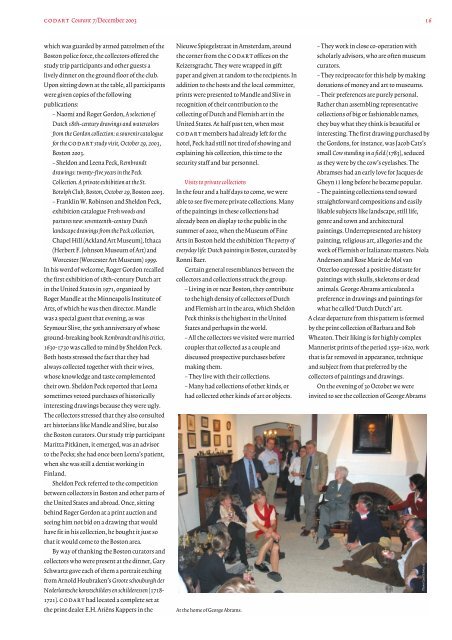
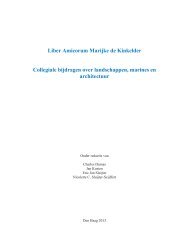
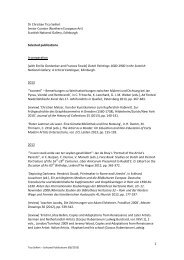

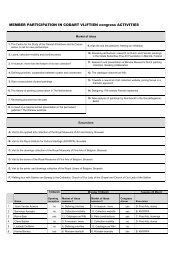

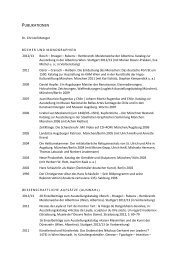

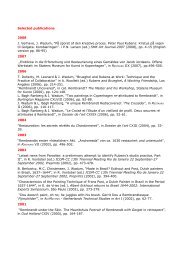
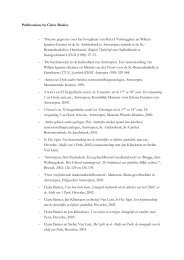
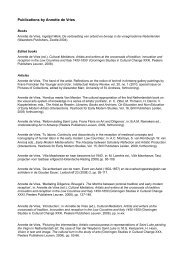
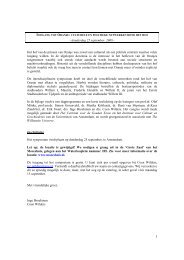
![curriculum [wim] - CODART](https://img.yumpu.com/19451661/1/184x260/curriculum-wim-codart.jpg?quality=85)
![curriculum [wim] - CODART](https://img.yumpu.com/19451660/1/184x260/curriculum-wim-codart.jpg?quality=85)
